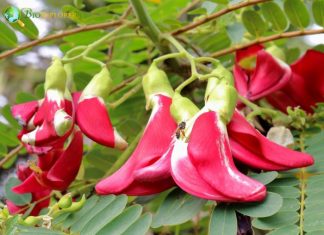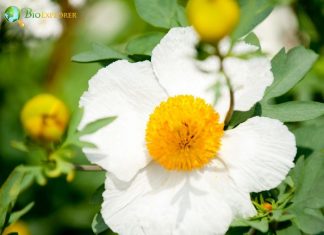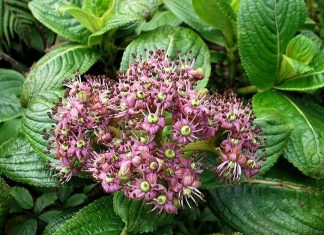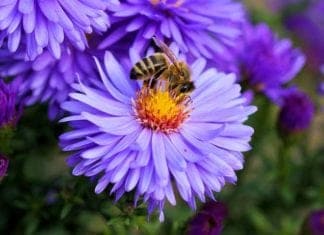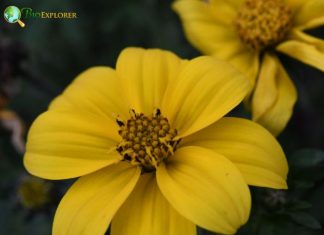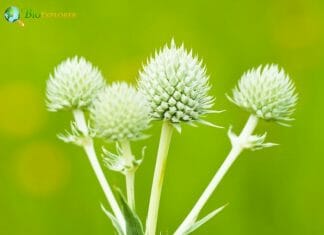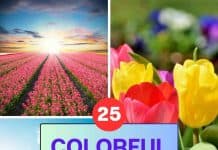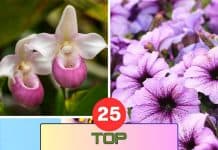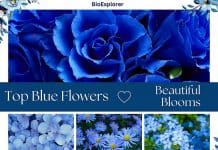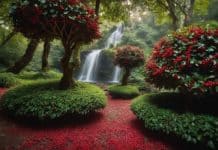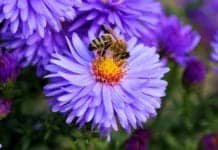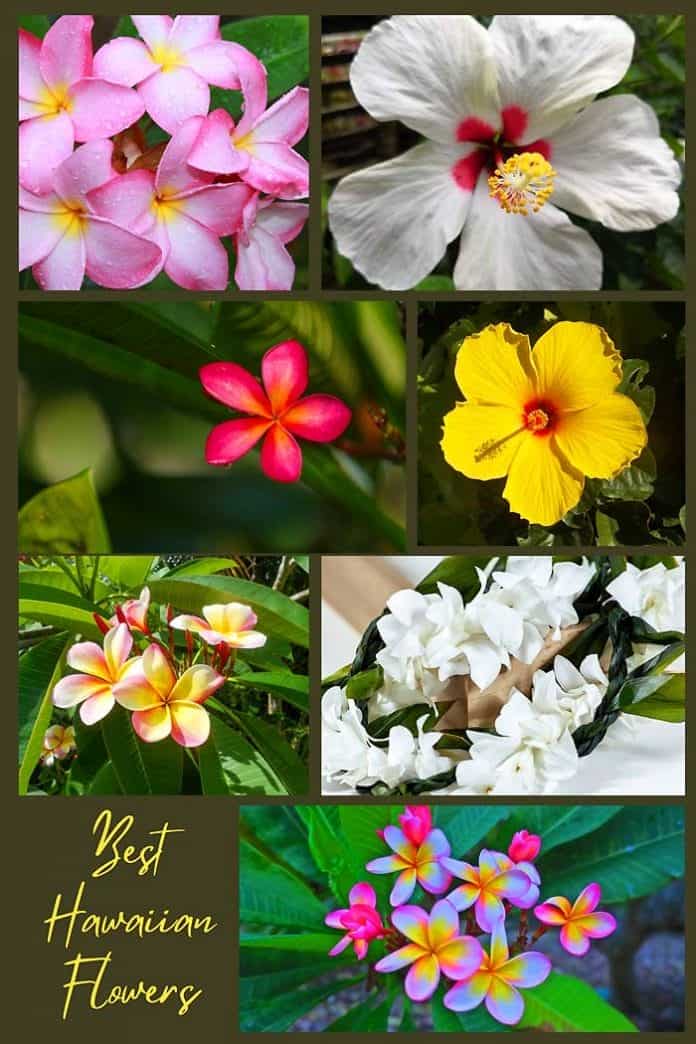
Hawaiian Flowers: Hawaii is home to over 1,000 species of endemic flora that occur naturally nowhere else on Earth. These native plants evolved in isolation over millions of years to adapt to the unique ecosystems of the Hawaiian archipelago that includes lush greenery, blue waters, and unique animals.
Endemic flowers, in particular, have evolved astonishing diversity in color, form, size, and relationships with specialist pollinators. Let’s explore some of Hawaii’s exceptional native flowers.
Table of Contents
- Top Hawaiian Flowers
- Metrosideros polymorpha
- Sesbania tomentosa
- Oahu River Hemp
- Argemone glauca
- Pua Kala
- Abutilon eremitopetalum
- Geranium arboreum
- Hibiscus brackenridgei
- Bidens cosmoides
- Brighamia insignis
- Sophora chrysophylla
- Broussaisia arguta
- Kanawao
- Argyroxiphium sandwicense subsp
- Exploring the Top 50+ Most Exquisite Purple Flowers in the World
- Lobelia gaudichaudii
- Leptecophylla tameiameiae
- Anoectochilus sandvicensis
- Vaccinium reticulatum
- Dwarf Naupaka
- Nanu or Na’u Gardenia
- Moloka’i White Hibiscus
- Dwarf White Hibiscus
- Koki’o ‘Ula
- Red ‘Ilima
- Hawaii Tree Cotton
- Pua ‘Ala
- ‘Akoko
- More Hawaiian Native Flowers
- Ecosystem Roles
- Conservation Concerns
- Hawaiian Flower Cultivation for Gardens
- Frequently Asked Questions
- What is the significance of plumeria in the Hawaiian tradition?
- Where can I see the bird of paradise, a gorgeous Hawaii flower, growing in the wild?
- Can you tell me about the fragrance of pikake flowers?
- How can I identify the different types of Hawaiian tropical flowers?
- Are there botanical gardens in Hawaii where I can see a variety of Hawaiian flowers?
- What does the Hawaiian gardenia flower look like?
- How is the tropical climate of the Hawaiian Islands suitable for the growth of flowers?
- Can I grow Hawaiian flowers like the fragrant leu or pikake at home?
- Are the flowers of Hawaii used in any other ways apart from beautifying the landscape and in leis?
- Are there any Hawaiian flowers with unique characteristics?
- Conclusion
Top Hawaiian Flowers
Hawaii boasts over 250 known endemic flowering species. Here we will highlight some of the stunning endemic blooms.
Metrosideros polymorpha
| Plantae | Myrtales | Myrtaceae | Metrosideros | Metrosideros polymorpha |
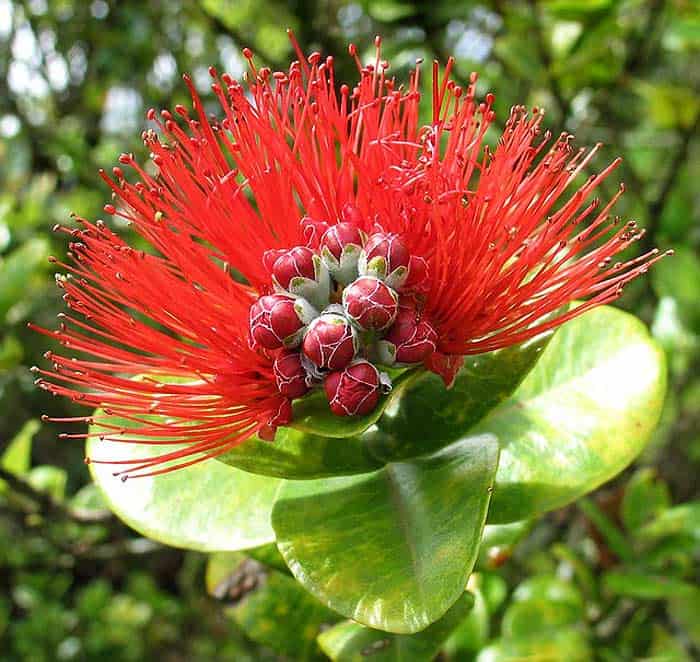
Locals call this First Hawaiian flower plant as the Ohia tree. It is a species of evergreen tree that is endemic to Hawaii.
- It belongs to the myrtle family and is distantly related to cloves and eucalypti.
- Ohia trees can differ in height from small bushes to towering forest trees.
- These trees can be easily recognized by their grey, scaly bark and bright red flowers with extremely long stamens.
- Ohia trees have a massive significance for local species, as well as members of aboriginal tribes of Hawaii.
Interesting facts:
- These trees are the primary nesting ground and source of food for local endemic Bird Species – Hawaiian honeycreepers.
- The petals of Ohia tree flowers are extremely short; what an onlooker perceives as a flower is the flower’s stamen.
- This tree is the first growth of fresh lava flows.
- Sometimes, ohia tree saplings grow as epiphytes in fern forests.
- The locals believe that the red Hawaiian flowers of the Ohia tree bring rain. Therefore, they tried to avoid picking these flowers when entering the forest to avoid getting caught in the downpour. When leaving the forest, one may take a flower to bring rain to their crops.
![]()
Sesbania tomentosa
| Plantae | Fabales | Fabaceae | Sesbania | Sesbania tomentosa |
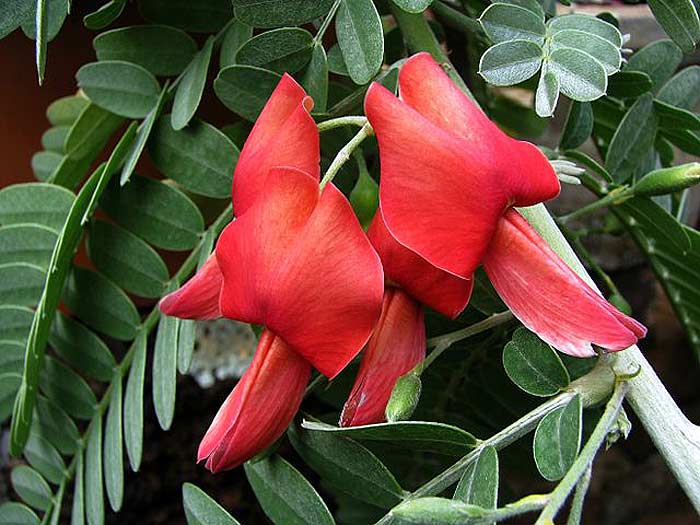
These endemic Hawaiian plants can grow to different heights. They can grow as shrubs with horizontal or arching branches or up to 15 feet plants.
- Their leaves resemble those of acacia and are located in rows on one stem. Each stem has two rows of oval silver leaflets covered with short hair.
- The flowers of those trees have bright pea-shaped flowers that grow in clusters.
- The flowers can be deep red, salmon, or sometimes yellow. The seeds of this tree grow in pods.
Interesting facts:
- The leaves at the stem can emit a scent similar to nectarines on hot and sunny days.
- These Hawaii flowers are rare on the main islands and are extinct on Ni`ihau island.
- One of the common names of this flower is Oahu river hemp.
- Before slowly dying out, these Oahu flowers were traditionally used in lei wreaths.
- This rare Hawaiian flower plant can cover several square meters of land in the wild.
Suggested Reading:
Oahu River Hemp
![]()
Argemone glauca
| Plantae | Ranunculales | Papaveraceae | Argemone | Argemone glauca |
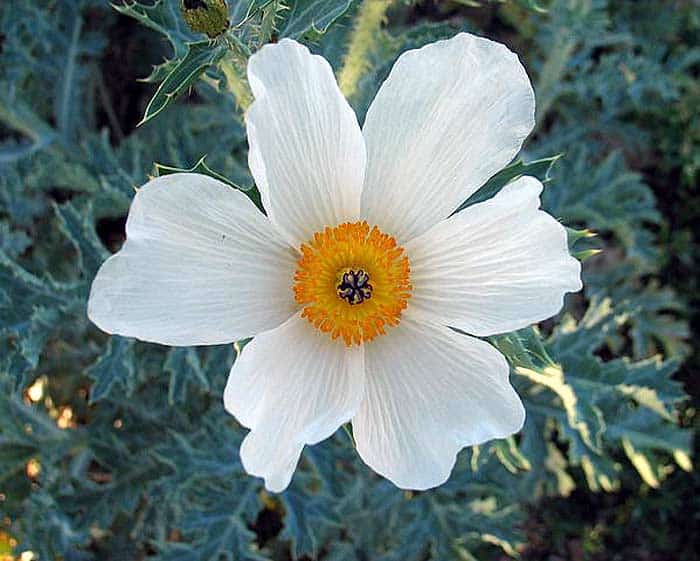
The next Hawaiian flower is Hawaii’s endemic plant that can be found only on the island O’ahu, on rocky terrain.
- These Hawaiian flowers grow from 1 to 3 feet high. They have typical blue-green stems with leaves covered in yellow spikes.
- Though this flower is often named Hawaiian poppy, it is quite unlike the European version: it is round and white with yellow stamens.
- The stigma in the center is lobed and colored purple inside. If the plant is damaged, it will ooze yellow sap. The seeds grow in dark, dry pods.
Interesting facts:
- The locals call this flower Pua Kala.
- Interesting fact: these plants are poisonous. The locals knew how to use them for treatment. The seeds and saps treat toothache and neuralgia because they have narcotic and analgesic properties.
- Each argemone flower lasts only a day, but one can expect new flowers daily in the blooming season.
- These native Hawaiian flowers are useless for bouquets – they wilt immediately.
- This plant is very prickly – stems, leaves, and seed capsules are hard to touch. It can be used in landscaping as a “path guardian” because of it.
Suggested Reading:
![]()
Abutilon eremitopetalum
| Plantae | Malvales | Malvaceae | Abutilon | Abutilon eremitopetalum |
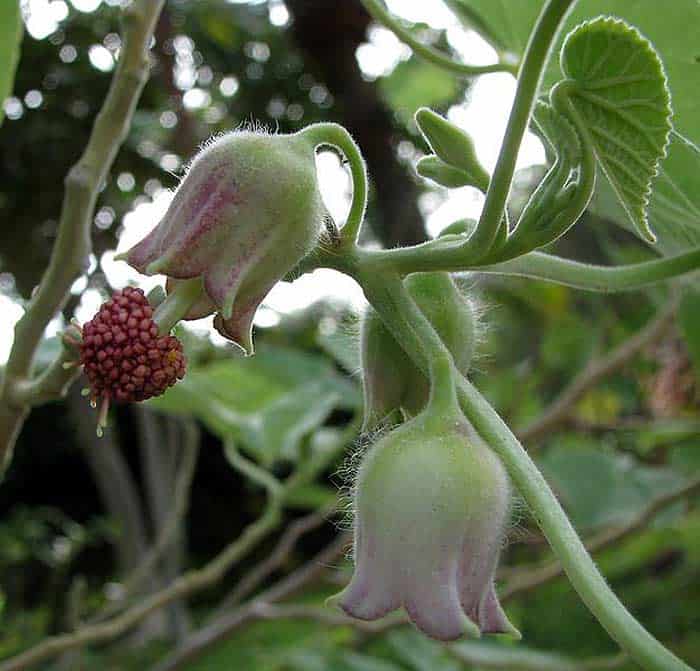
This plant is a shrub. It has typical heart-shaped leaves with toothed edges. The leaves are covered with soft, short hairs.
- The flowers look green; however, the green sepals form the outer flowers.
- The other prominent part of this Hawaiin flower is the stamen column, which can be identified as a cluster of yellow, red, or white balls that sit on a long stem beyond the actual flower.
- This shrub is extremely rare. These Hawaiian flowers form cylindrical fruit around half an inch in diameter.
Interesting facts:
- Abutilon fruit is usually covered in brown or white fuzz.
- The real color of the flower petals is also green. Sometimes, the lime green petals can have a spot of red entirely hidden by sepals. There are only 3 species of maple with flowers like that.
- The common local name for this plant is hidden-petalled illima.
- There is only one place where this plant can be found – at the height of approximately 300 m on Lana`i island.
- Introducing exotic species like lantana threatens this plant.
![]()
Geranium arboreum
| Plantae | Geraniales | Geraniaceae | Geranium | Geranium arboreum |
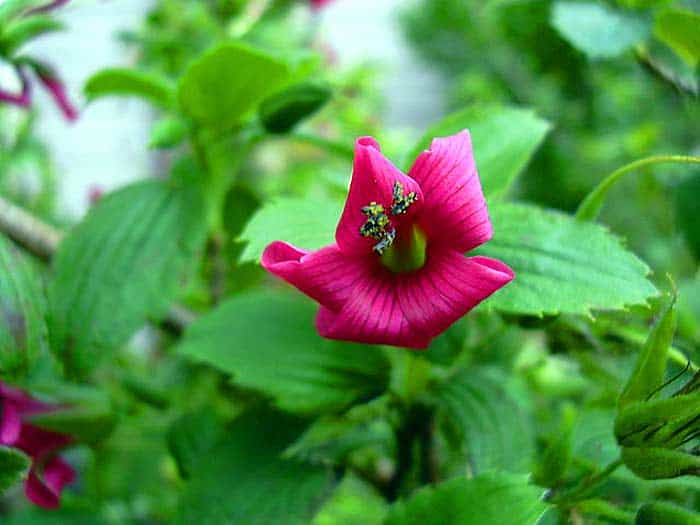
This flower is endemic to Hawaii and can only be found on Maui island. It is listed as endangered on the federal level.
- This shrub can grow up to 4 meters in height. The leaves of this geranium species have “teeth” on the edges.
- These Maui flowers are bright and can be colored red or magenta. One can also find this geranium in the National Haleakala Park.
Interesting facts:
- The common name for this flower is red cranesbill.
- This unique geranium is the only species in its genus pollinated by birds, especially honeycreepers such as Entirely.
- According to specialists, this geranium species is so rare it can be found in only nine isolated populations, and no more than 50 individual plants are left.
- These rare Hawaii flowers thrive in moist, shady gulches.
- The main enemies of this plant are wild pigs and grazing cattle, as well as competition from introduced species.
![]()
Hibiscus brackenridgei
| Plantae | Malvales | Malvaceae | Hibiscus | Hibiscus brackenridgei |
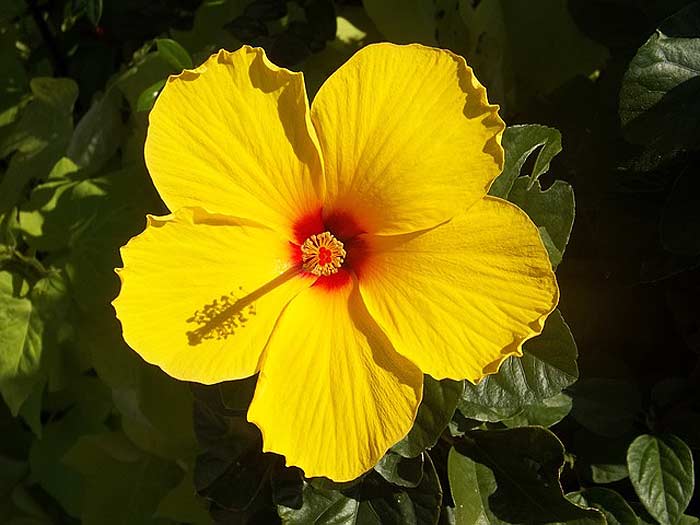
The locals call this shrub Ma’o Hau Hele. The Western name is Brackenridge’s Rosemallow.
- This Hawaiian flower plant is a shrub that can grow to different heights.
- The plant’s bark is smooth while young.
- As these plants grow, the trunks may develop wrinkled bark. The leaves are fuzzy, with toothed edges and dark green.
- The flowers of this hibiscus are large and bright yellow and often form small clusters. This plant needs sunny spaces to grow.
Interesting facts:
- The Yellow hibiscus is the official state flower of Hawaii since 1988. The previous Aloha state flower was a generic hibiscus.
- The translation of the native name means “traveling green hau“. When the plant grows too high, it may fall over, and the fallen branches may spread new roots. There was a report about a particular shrub that has “traveled” this way about 20 feet.
- To cultivate these famous Hawaiian flowers, gardeners need to pollinate them manually to prevent hybridization.
- Hawaii changed its state flower from red to yellow hibiscus in 1988, as it was the only known yellow hibiscus species.
- There are two subspecies in these native Hawaiian plants; each grows on individual islands.
![]()
Bidens cosmoides
| Plantae | Asterales | Asteraceae | Bidens | Bidens cosmoides |
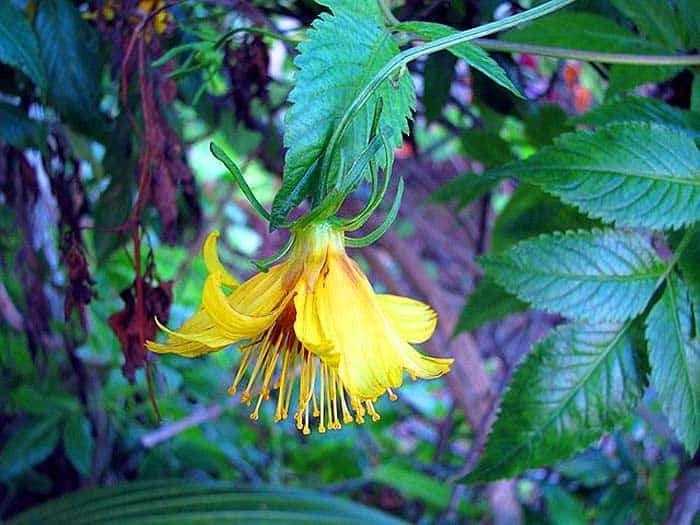
The next Hawaiian flower is a woody climbing plant that can grow 6-8 feet high. The branches can sprout their roots if they touch the soil.
- The leaves are long and comprise 3-8 smaller leaflets. The flowers are bright yellow, with long bell-shaped petals resembling a daisy.
- They also have typical messy-looking stamens. Bidens flowers usually look downwards in small clusters.
- The plant tends to grow in damp forests.
Interesting facts:
- The common name for these flowers of Hawaii is Cosmosflower beggarticks.
- These flowers are often used for lei-making.
- This plant is endemic to Kauai Island.
- The locals call this flower Po’ola Nui. It is the largest among so-called ko ‘oko’olau flowers (the collective name for the flowers in the genus Bidens).
- The leaves of these flowers native to Hawaii were traditionally used in hot tonics and teas before the Westerners found the islands.
![]()
Brighamia insignis
| Plantae | Asterales | Campanulaceae | Brighamia | Brighamia insignis |
.
This plant is often called a Hawaiian palm but is actually a succulent. This flower has a typical succulent stem that is wider below.
- It has a cluster of spoon-shaped, leathery, dark green leaves on the upper side.
- The flower stems grow directly from the cluster of leaves. The tubular flowers are usually white or yellow.
- These Hawaiian tropical flowers grow on Kauai Island exclusively. It is both endemic and critically endangered.
Interesting facts:
- One of the names for the flower is cabbage-on-the-baseball bat or cabbage on a stick!
- These beautiful Hawaiian flowers are often cultivated for protection against slugs and African snails in the garden.
- The plant is dying out because the moth that used to pollinate it has gone extinct.
- There is a theory that the local tribes were growing this plant because its seeds have medicinal properties, though nobody knows exactly what they were.
- The scent of these endemic Hawaiian flowers is similar to honeysuckle.
![]()
Sophora chrysophylla
| Plantae | Fabales | Fabaceae | Sophora | Sophora chrysophylla |
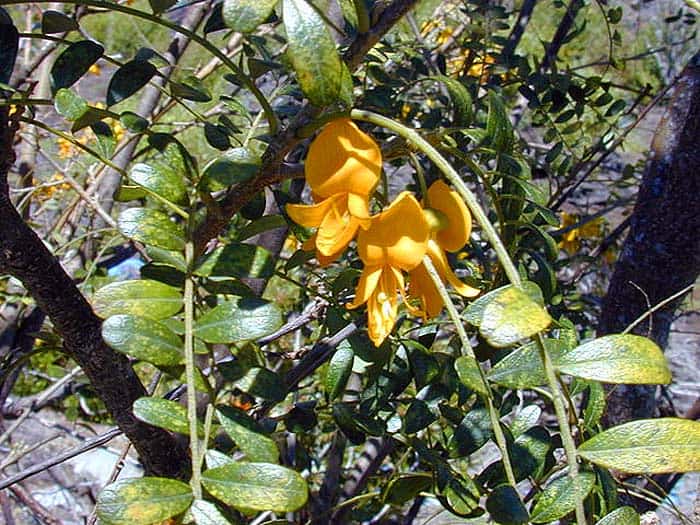
These Hawaiian flowering trees can grow up to 12 meters high and have compound leaves.
- The leaflets of the Sophora chrysophylla tree are thick, dark green, and oblong, grouped in two rows on the same stem.
- These flowers from Hawaiian trees are bright yellow and form small clusters at the tips of the branches.
- The form of the flowers is typical for the pea family, to which this plant also belongs.
- The trees carry their seeds in long seed pods that resemble a necklace. One can see Sophora chrysophylla plants in uplands and dry forests.
Interesting facts:
- As with many Hawaiian endemic plants, these trees are endangered.
- The local name for these native Hawaiian flowers is Mamane trees.
- Sophora chrysophylla flowers are the primary food source for local honeycreepers that feed on its nectar.
- One honeycreeper, particularly a rare Palila bird, feeds on its seeds.
- The seeds of Sophora chrysophylla are poisonous, and only two species can tolerate them.
![]()
Broussaisia arguta
| Plantae | Cornales | Hydrangeaceae | Broussaisia | Broussaisia arguta |
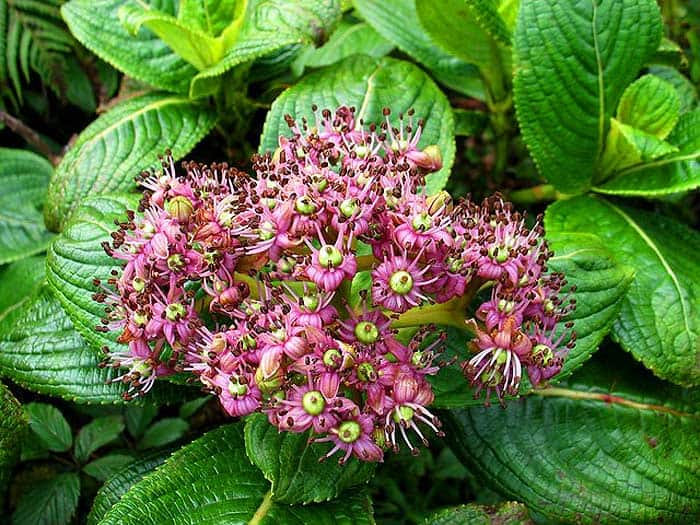
This Hawaiian plant belongs to the same family as the common hydrangea.
- It is an upright shrub with leaves that grow opposite each other, forming whorls.
- The flower leaves are oblong, narrow at the end, with deep-seated veins.
- These best flowers in Hawaii have prominent stamens and small, curled petals.
- They form big clusters. They are colored violet, brown, or black.
- The plant also produces black, small berries that were said to be eaten by the Hawaiians.
- This plant is endemic to Hawaii. The local name of this plant is Kanawao.
Interesting facts:
- The locals call this plant Kanawao.
- These Hawaiian flowering plants can spread with the help of seeds and by sprouting new roots.
- There is only one species in the genus Broussasia.
- Pigs brought to Hawaii often dig under these Hawaiian flower plants and damage roots. Fencing small colonies of these plants from the pigs has considerably helped in restoring them.
- A species of spiders called “happy face spiders” are known to hide under Kanawao leaves.
Suggested Reading:
Kanawao
Flower Type: Shrubs/Trees![]()
Argyroxiphium sandwicense subsp
| Plantae | Asterales | Asteraceae | Argyroxiphium | Argyroxiphium sandwicense |
.
This Hawaiian flower plant can be found on the summit of Haleakala National Park on Maui, as well as on Mauna Kea.
- It is known to the scientists as Hawaiian silversword.
- These Hawaiian flowering plants are acclimated to heights. The silversword resembles a rosette of spiky, silver-grey leaves in the non-flowering period.
- The bright red or purple flowers grow downward from the general stem.
Interesting facts:
- The silversword blooms only once and then dies.
- The silversword’s flowers grow several times as high as the rosette at the base.
- This Hawaiian flower is one of the rarest plants in the world. The local authorities tried to outplant it in other locations to preserve it.
- The Hawaiian name for it is ahinahina – ‘very grey’.
When attempts were made to cultivate this plant, it began branching and flowering almost yearly.
Suggested Reading:
Exploring the Top 50+ Most Exquisite Purple Flowers in the World
![]()
Lobelia gaudichaudii
| Plantae | Asterales | Campanulaceae | Lobelia | Lobelia gaudichaudii |
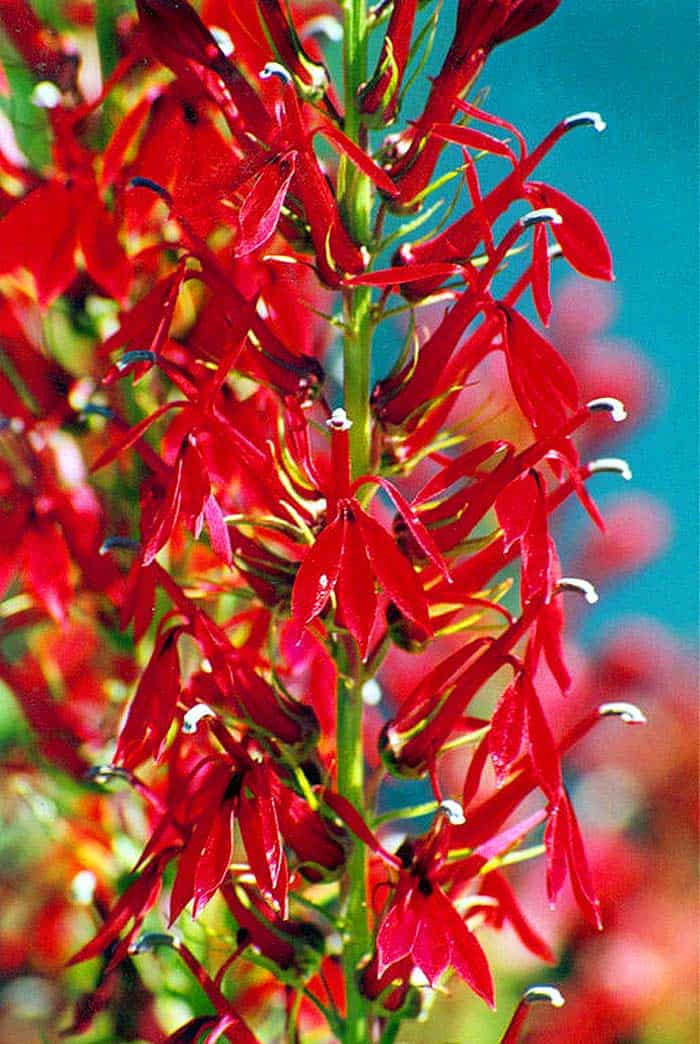
This Hawaiian plant grows in the Southern Ko’olau mountains on Oahu island.
- These native Hawaiian plants have a woody stem with a rosette of long leaves on its top.
- The flowers grow on a long stem, usually crimson.
- The petals are short, and there are usually many small flowers around one stem.
- These flowers require wet conditions to flourish.
Interesting facts:
- Scientists believe that Lobelia species arrived in Hawaii around 13 million years ago.
- The flowers have a peculiar, curved shape to accommodate the bills of the native birds that feed on their nectar.
- Lobelia flowers can grow up to 75 cm long.
- According to the specialists’ data, around 1000 Lobelia gaudichaudii plants are left in the archipelago.
- A subspecies, Lobelia gaudichaudii ssp. koolauensis is almost extinct – there are less than 252 plants in total.
![]()
Leptecophylla tameiameiae
| Plantae | Ericales | Ericaceae | Leptecophylla | Leptecophylla tameiameiae |
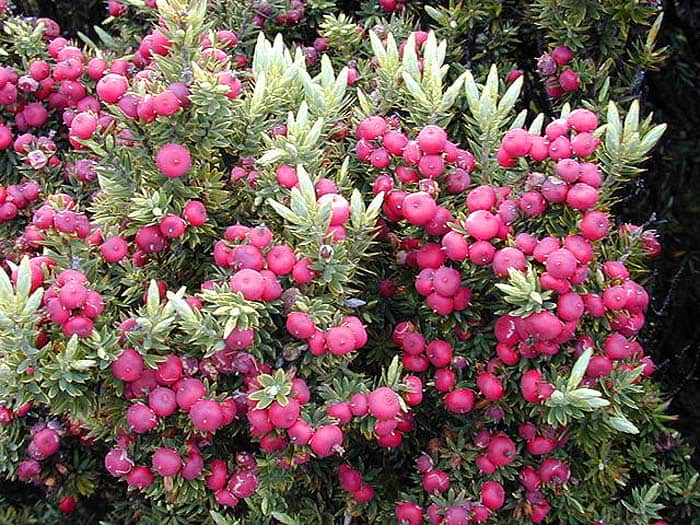
The next Hawaiian flower plant is a shrub that usually grows in open spaces and forests and can be found at low and middle heights.
- The shrub has multiple branches with small, clustering leaves.
- The flowers and fruit can be seen on the top of the branches.
- Flowers are either white or pink.
- The fruits form clusters and can be white, pink, or red.
Interesting facts:
- It is one of the few endemic Hawaiian plants that are not considered endangered.
- The leaves of this plant are used in a concoction used to prevent congestion.
- The fruit of this Leptecophylla shrub is often used in lei-making.
- Traditionally, the wood of leptecophylla was used in sacred ceremonies conducted in the new chief’s honor or in burning the corpses of criminals.
- The wood of leptecophylla shrubs, or puki`awe, was also used for making Kua kuku – a special anvil for beating tapa.
![]()
Anoectochilus sandvicensis
| Plantae | Asparagales | Orchidaceae | Anoectochilus | Anoectochilus sandvicensis |
.
This Hawaiian flower is one of the three species of Hawaiian endemic orchids. It is called a jewel orchid.
- Like many orchid species, this is a creeping plant. The orchid’s stem can form roots at its nodes.
- The leaves are dark green and can be seen mainly on the upper portion of the stem.
- The flower itself is bright yellow. The flowers face downward and form clusters on a single stem.
- This orchid can grow separately in deep shade, wet conditions, or around the lower part of the tree trunks.
Interesting facts:
- This orchid is the most striking among the three endemic Hawaiian orchids – the other two are far less conspicuous.
- Most orchids in Hawaii except the three already mentioned are introduced, not native species.
- The jewel orchid became vulnerable with the introduction of honeybees that could pollinate the orchid species brought from other countries, thus increasing the competition.
- This beautiful Hawaiian flower orchid can be easily destroyed by pigs or slugs.
- This plant has no defined blooming season – it may flower sporadically through the year.
![]()
Vaccinium reticulatum
| Plantae | Ericales | Ericaceae | Vaccinium | Vaccinium reticulatum |
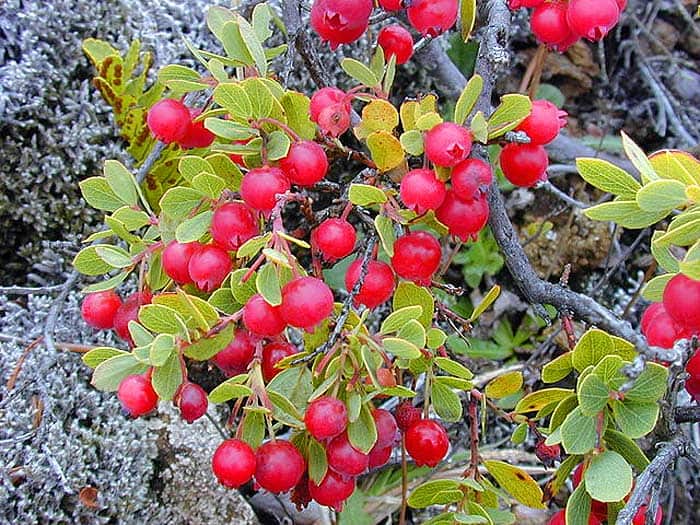
The locals call this shrub `Ohelo. This small Hawaiian shrub can go up to 4 feet in height. It has medium-sized, leathery leaves and is oval.
- The leaves can be both smooth and hairy. The leaf’s edges can also vary: smooth, toothed, and rolled under the leaves.
- Each Hawaiian hair flower of the vaccinium plant grows separately from the leaf base.
- Flowers may vary from red to yellow with red stripes.
- They are tubular, about 1 and 4 inches long. The fruit is small, red, purple, or yellow, and grows in clusters.
Interesting facts:
- This plant is a local relative of cranberry.
- The branches of this shrub grow from underground stems called rhizomes.
- `Ohelo has such variable leaves because there can be leaves of different ages on the same shrub: for instance, the upper part would hold adult leaves, and the lower part would be juvenile leaves.
- This plant can self-fertilize.
- The berries of V.reticulatum were found to contain phytochemicals with high antioxidant capacities.
![]()
Dwarf Naupaka
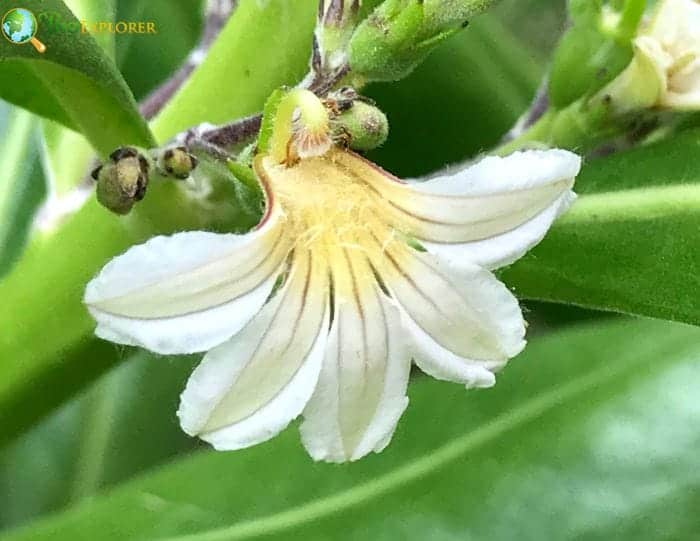
| Plantae | Asterales | Goodeniaceae | Scaevola | Scaevola coriacea |
The Dwarf Naupaka (Scaevola coriacea) is a unique ground-dwelling plant native to Hawaii. It’s characterized by its unusual flowers, yellow-green with purple streaks, appearing as if they’re cut in half with petals only on one side.
- This perennial herb belongs to the Goodeniaceae family and features succulent, spade-shaped leaves, spread out rather than dense, contrasting with the common perception of a shrub.
- Traditionally found on the sandy dunes of Hawaiian beaches, Dwarf Naupaka’s existence is now threatened by habitat loss due to development, competition from invasive species, and physical disturbances like erosion. This has led to its classification as an endangered species, with a significantly reduced population mainly on Maui and nearby islets.
- The name ‘Naupaka’ is steeped in Hawaiian legend, derived from a tale of separated lovers, symbolized by the plant’s half flowers. This story, however, doesn’t link the plant to any Hawaiian ocean deity.
Although previously thought to thrive in volcanic soils and serve as a key nectar source for native bees, there’s no specific mention of these aspects in recent findings. Its flowering patterns and peak seasons are not as explicitly defined as previously believed.
![]()
Nanu or Na’u Gardenia
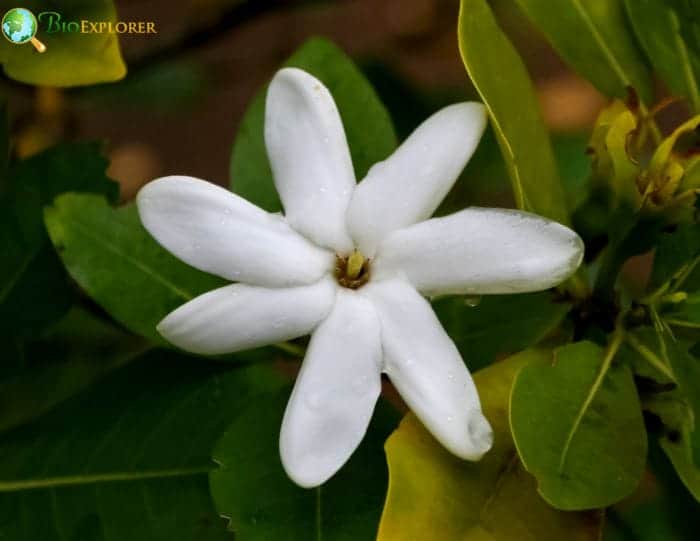
| Plantae | Gentianales | Rubiaceae | Gardenia | Gardenia brighamii |
The Nanu or Na’u Gardenia (Gardenia brighamii) is a small tree native to Hawaii, standing up to 20 feet tall with a trunk diameter of about 12 inches.
- Its leaves are shiny, dark green, oval-shaped, and range from 1 to 4 inches long and 0.5 to 2 inches wide. The plant bears solitary, white, and very fragrant flowers about 1 to 1.5 inches in diameter, not the larger 6-7-inch size previously mentioned. These flowers mature into hard, green fruits about the size of a golf ball.
- Thriving in tropical dry forests at elevations of 350 to 520 meters, the Nanu is predominantly found on Maui, Moloka’i, Oʻahu, Lānaʻi, and the Big Island.
- This species, once thought to inhabit all main Hawaiian Islands, is now nearly extinct in its native habitat due to habitat loss and invasive species. The total known population is critically low, between 15 and 19 trees.
- Culturally, the Nanu was valued by Native Hawaiians for various purposes. The wood was used to make kua kuku (kapa anvils) and the fragrant flowers were traditionally used in lei making. The orange-yellow pulp of its fruit was a source of dye for kapa, a significant cultural fabric.
The Nanu is an important component of Hawaii’s native lowland dry forests, one of the most species-diverse and threatened ecotypes in the region. While it’s not specifically mentioned as a precursor to Asian gardenia species, its ecological and cultural significance within Hawaii is profound.
![]()
Moloka’i White Hibiscus
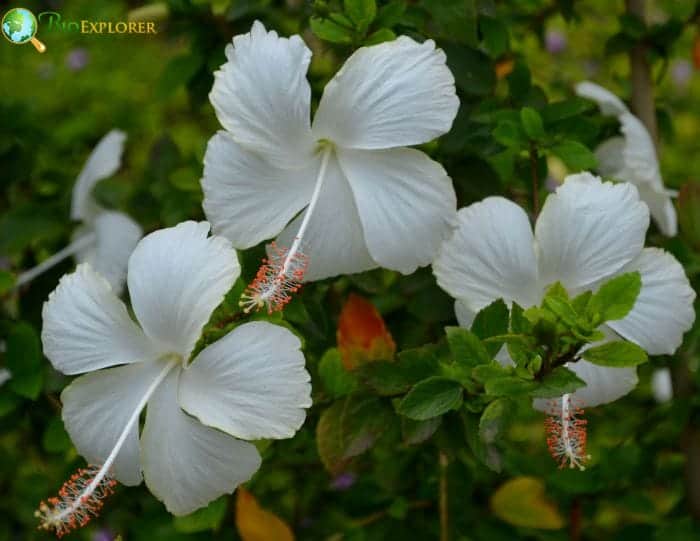
The Moloka’i White Hibiscus, known scientifically as Hibiscus arnottianus ssp. immaculatus, is a unique and endangered species native to Moloka’i.
- It grows as a tree reaching heights between 10 to 30 feet, and is found in dry to partially sunny environments at elevations ranging from 50 to 1, 600 feet.
- Contrary to earlier descriptions, the white blossoms of this hibiscus are large, measuring 8 to 11 cm (3.1 to 4.3 inches) long and 2.5 to 3.5 cm (1 to 1.4 inches) wide.
- The plant’s leaves are alternate, oval, and toothed, measuring 5 to 7 cm (2 to 2.8 inches) long and 4 to 6.5 cm (1.6 to 2.6 inches) wide.
- In the wild, the Moloka’i White Hibiscus is critically endangered, with its population reduced to less than a dozen individual plants. This aligns with the observation that only two naturally occurring groups have more than 15 individual plants.
- While there is speculation that native moths, possibly including Manduca hawk moths, may have been primary pollinators due to the flower’s fragrance, specific pollination details are not clearly established.
The species is a focus of conservation efforts, being cultivated in botanical gardens as part of the strategy to preserve and propagate it, given its extremely limited natural population. The Hibiscus arnottianus ssp. immaculatus is particularly noted for its white flowers, distinguishing it from other subspecies that might have different colored blossoms
![]()
Dwarf White Hibiscus
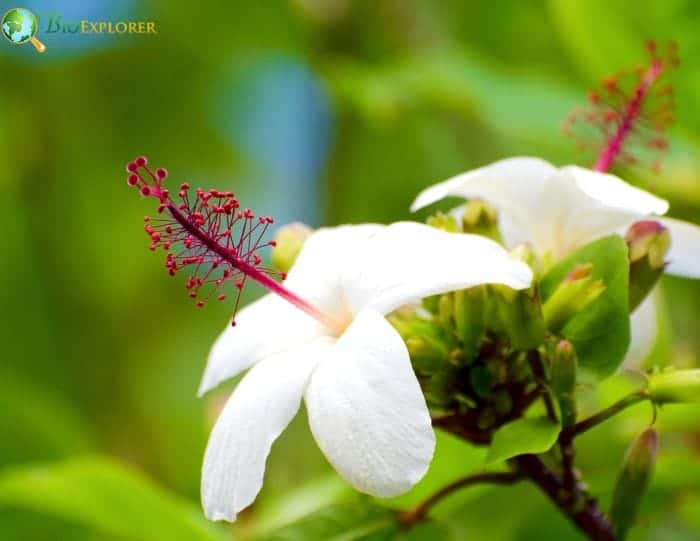
This endangered Hawaiian shrub (Hibiscus waimeae ssp. hannerae) displays very small 1-2-inch-wide white hibiscus flowers with rounded, slightly overlapping petals and vibrant reddish-orange throats and stamens. Its slender fuzzy stems grow to 1-2 feet tall in dry scrubland at high elevations.
- Endemic to leeward high-elevation plains of Kauaʻi.
- Fewer than 100 plants left in a single wild population.
- Leaves are the exclusive host of the non-native leafhopper Sophonia orientalis.
- When leafhopper feeds, photosynthesis is reduced by 40% in only 2 days.
- Does not demonstrate natural defenses to this invasive insect species.
- Research suggests this represents a “novel plant-herbivore association”.
- Now bred in captivity by National Tropical Botanical Garden (NTBG) for reintroduction.
![]()
Koki’o ‘Ula
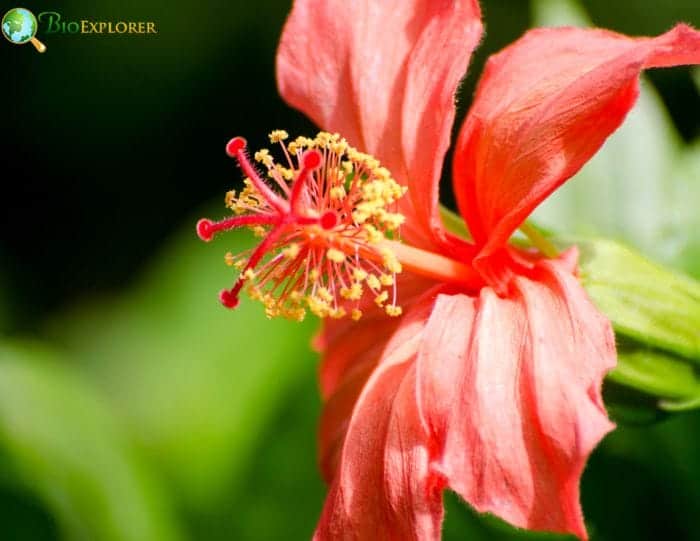
| Plantae | Malvales | Malvaceae | Hibiscus | Hibiscus clayi |
The Koki’o ‘Ula (Hibiscus clayi) is a critically endangered Hawaiian hibiscus species, renowned for its vibrant scarlet red flowers, which typically span 6-8 inches across.
- These blossoms are characterized by five broadly overlapping petals and conspicuous bushy yellow stamens. Contrary to earlier descriptions of the plant’s size, Hibiscus clayi can reach impressive heights, growing from 12 to 25 feet tall with a spread of around 10 feet.
- Endemic to the eastern parts of Kaua’i, it thrives in elevations between 690 to 1, 050 feet. The current known population of this species is alarmingly small, with only four plants remaining in the wild. This indicates a more precarious situation than previously thought, where it was mentioned that two small populations consisting of around 250 mature plants existed.
- While Hibiscus clayi requires moist conditions for optimal growth, specific requirements of 60+ inches of annual rainfall and deep shade haven’t been explicitly confirmed.
- The suggested co-evolution with the Iʻiwi honeycreeper as its primary pollinator and the plant’s role in stabilizing rainforest soils through its deep root system are intriguing aspects of its ecology but are not extensively detailed in the available resources.
Efforts to conserve the Koki’o ‘Ula include breeding programs for reintroduction into its natural habitat, highlighting the critical need for conservation measures to preserve this unique and striking species.
![]()
Red ‘Ilima
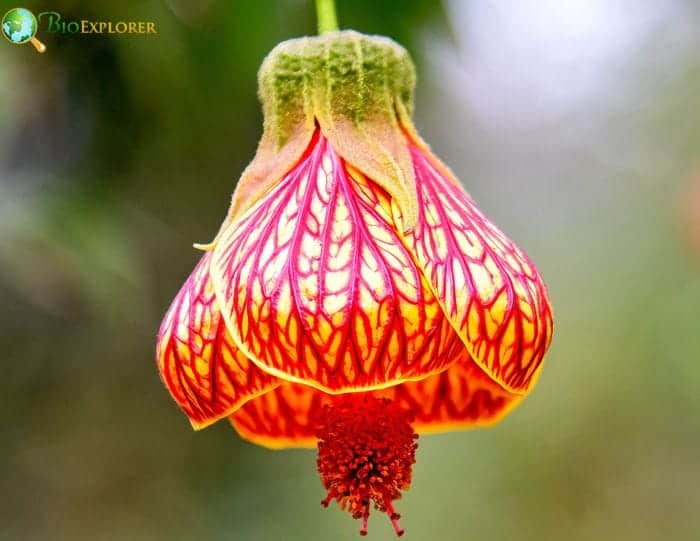
| Plantae | Malvales | Malvaceae | Abutilon | Abutilon menziesii |
The Red ‘Ilima (Abutilon menziesii), known in Hawaiian as Koʻoloaʻula, is a critically endangered shrub endemic to the Hawaiian Islands.
- It can reach up to 10 feet in height, with coarsely-toothed, silvery, heart-shaped leaves that vary in size from 2 to 8 centimeters long. The plant is recognized for its small hibiscus-shaped flowers, which hang downward and are typically medium to dark red, about 2 centimeters across.
- These flowers can range in color, including shades of pink, red, and even yellow, and are often obscured by the plant’s larger leaves.
- Abutilon menziesii is found in dry forests on the islands of Lānaʻi, Maui, Oʻahu, and Hawaiʻi. Currently, there are only about 450-500 plants remaining in fewer than ten naturally occurring populations.
- The rarity of this plant is mainly due to habitat changes for agricultural and urban development, overgrazing by livestock and feral animals, and competition from invasive weeds.
- Conservation efforts for Abutilon menziesii involve protecting remaining habitats, establishing new populations, and conserving genetic material in seed banks and botanical gardens.
The plant is propagated through seeds, with the seed capsules typically containing 18-24 small, dark brown seeds. Cultivation from seeds and cuttings is an integral part of the reintroduction efforts by native plant nurseries.
![]()
Hawaii Tree Cotton
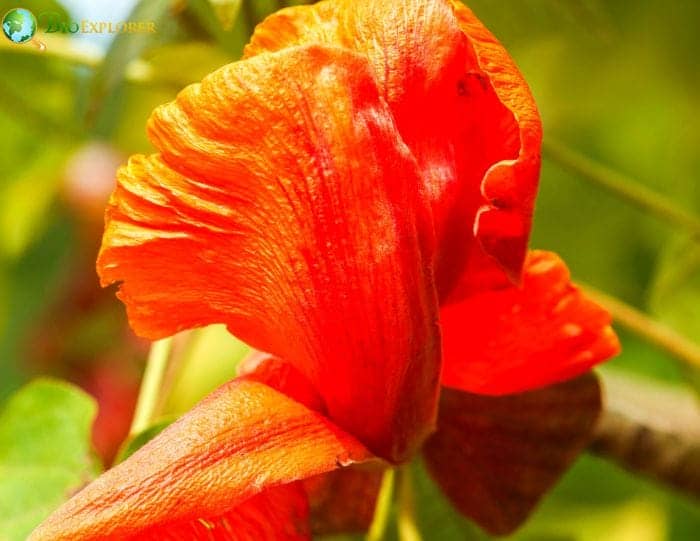
| Plantae | Malvales | Malvaceae | Kokia | Kokia drynarioides |
The Hawaii Tree Cotton, known as Kokia drynarioides, is a critically endangered species endemic to the Big Island of Hawaii.
- It grows as a small tree, ranging from 4 to 10 meters (13 to 35 feet) in height, with a trunk up to 20 cm (8 inches) in diameter. The plant features large, glossy green leaves that are 7 to 28 cm (2.8 to 11 inches) long, with 7to 9-palmate lobes and often distinct red veins.
- The flowers of Kokia drynarioides are large, showy, and red, measuring 10 to 15 cm (4 to 6 inches) long and up to 8 cm (3 inches) wide. They have a spiral pattern that remains visible when the flower is open. The fruit is a 5-lobed dry capsule, about 2.5 cm (1 inch) long.
- This species is found in dry forests at elevations of 455–1, 915 meters (1, 493–6, 283 feet) and is threatened by habitat loss and competition with invasive species. Only about five trees are known to exist in the wild in the North Kona region on the Big Island of Hawaii, although there are numerous cultivated plants in arboretums and botanical gardens.
- The specific pollinators of Kokia drynarioides are not mentioned in the sources, nor is there detailed information on the traditional use of its cotton-like fibers.
The plant is indeed federally listed as endangered and adapted to specific environmental conditions like dry, full sun, and certain elevation ranges.
![]()
Pua ‘Ala
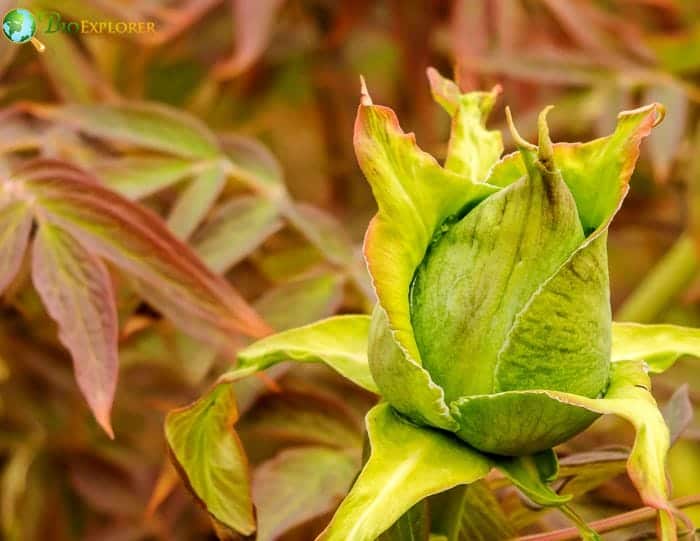
| Plantae | Asterales | Campanulaceae | Brighamia | Brighamia rockii |
The Pua ‘Ala (Brighamia rockii) is a unique species in the Campanulaceae (bellflower) family, distinguished by its unbranched, succulent stem that grows 1 to 5 meters (3.3 to 16 feet) tall.
- The plant features fleshy, oval leaves arranged in a Rosette at the top, measuring 6 to 22 cm (2.4 to 8.7 inches) long and 5 to 15 cm (2 to 6 inches) wide. It produces fragrant flowers in clusters of three to eight in the leaf axils.
- These Hawaiian Flowers have a green to yellowish-green tubular base, which flares into five white, elliptic lobes.
- Contrary to the initial description, Pua ‘Ala is found on Molokaʻi, not Kauai, with approximately 60-70 plants remaining.
- Threats to this species include competition with alien invasive plants, consumption by feral ungulates and rats, small population size, landslides, erosion, and climate change.
- Pua ‘Ala is federally listed as an endangered species and is critically endangered on the IUCN Red List. It thrives in windswept sea cliffs and requires specific habitat conditions.
Conservation efforts include participation in the Endangered Species Recovery program and ex-situ conservation measures like seed banking and cultivation in botanical gardens
![]()
‘Akoko
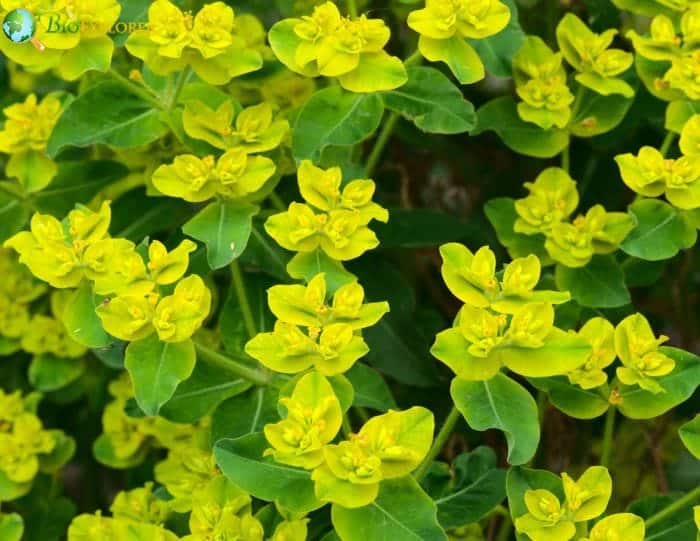
The ‘Akoko (Euphorbia celastroides var. kaenana) is a species of the Euphorbiaceae family, notable for its compact, shrub-like growth, reaching up to 1.5 meters (5 feet) in height.
- It has milky sap and predominantly hairless leaves that are arranged in pairs along the stem. These leaves are 2 to 6.5 cm (0.8 to 2.6 inches) long and 1.8 to 2 cm (0.3 to 0.8 inches) wide, being widest at the tip, and tend to fall off during the dry season.
- The Hawaiian plant produces dense clusters of tiny flowers on its side branches, resulting in small, upright capsules. The seeds within these capsules are small, spherical, and typically gray or white.
- The ‘Akoko is a federally listed endangered species, primarily threatened by competition from invasive alien plant species, fire, and the effects of recreational activities.
- Conservation efforts include measures by the Division of Forestry and Wildlife, such as restricting off-road vehicle access to protect its habitat, and propagating the species at the NTBG.
Although its exact current population size is not specified, it is known to be endangered and under active conservation management
![]()
More Hawaiian Native Flowers
Cosmos Flower beggarticks
Rattlesnake
Flower Type: PerennialsEcosystem Roles
Hawaii’s great diversity of over 250 known endemic flower species is integral to the structure and function of native-dominated forest and shrubland ecosystems at all elevations. Through co-evolution over millions of years in isolation, they have formed specific symbiotic relationships with native pollinators, fruit dispersers, and herbivores that may not adapt as readily to introduced species.
Co-Evolutionary Relationships
Endemic lobelioids, mints, hibiscus, silverswords, and scores of other specialized endemic flowers exhibit exclusive one-to-one pollination relationships with their equally specialized co-evolved partners – hawkmoths, hover flies, yellow-faced bees, and nectar-feeding birds including honeycreepers and Hawaiian thrushes. These relationships ensured mutual survival.
This intimate co-evolution led to unique floral adaptations like curved tubular blossoms precisely matching pollinator anatomy, tongues, and beaks. It also influenced the reliance on endemic plants by native bird and insect species for food and nesting habitat. The introduction of alien species has severely disrupted these delicate long-standing relationships.
![]()
Conservation Concerns
Most of Hawaii’s over 1,000 endemic plant species are threatened by serious endangerment factors, with over 95 species already federally listed as endangered or threatened. Key concerns include:
- Widespread habitat degradation and outright destruction over decades.
- Development, agriculture, ranching, and smothering by invasive plants.
- Trampling, browsing, and rooting by invasive pigs, deer, goats.
- Disrupts native plant pollination and seed dispersal.
- Climate change increasing stress.
- Rising temperatures exceed safe margins for some species.
- Shifting rainfall patterns to drought or flooding.
- Very narrow safe elevation bands for high-mountain species.
- Alarming lack of remaining genetic diversity.
- Many species reduced to a single small population.
- Risk of inbreeding depression or loss of adaptation.
- Most propagation focused on just a few maternal wild collections.
Dedicated rare plant specialists have enacted heroic conservation measures to prevent extinctions. However, all Hawaiian endemics face inherent, long-term vulnerability due to the complete isolation of the archipelago and their highly specialized ecological niches.
![]()
Hawaiian Flower Cultivation for Gardens
Several extraordinarily beautiful Hawaiian endemic flowers showcased here can be sustainably cultivated in home gardens without posing invasive threats, given proper oversight and responsibility. Conscientious gardeners must practice care by:
- Rigorously selecting only species proven unambiguously non-invasive.
- Ensuring any nursery-grown plants come from licensed and regulated growers.
- Closely matching growing conditions and climate to native habitat needs.
- Preventing unintentional hybridization between related endemic species.
- Carefully containing and monitoring any species known to spread aggressively.
Reputable native plant nurseries committed to conservation should provide all needed details on habitat requirements, growth habits, and appropriate safeguards before purchase. Gardeners must serve as responsible stewards when incorporating native plants, ensuring they thrive without enabling unintended ecological harm.
With shared diligence alongside appreciation for Hawaii’s exceptional floral heritage, home gardeners can potentially help broaden sustainable communities for select elegant non-invasive endemics.
![]()
Frequently Asked Questions
What is the significance of plumeria in the Hawaiian tradition?
Plumeria, also known as common Hawaiian flowers, plays a significant role in Hawaiian culture. They are often associated with the Aloha spirit and are used in leis, a traditional Hawaiian garland or wreath.
Where can I see the bird of paradise, a gorgeous Hawaii flower, growing in the wild?
The Bird of Paradise, an ornamental tropical flower, grows in the wild across the Hawaiian Islands. They are often seen adorning the local landscapes.
Can you tell me about the fragrance of pikake flowers?
Pikake, also known as Arabian jasmine, is known for its strong, sweet, and pleasant fragrance. It’s one of the most fragrant flowers in Hawaii and is widely used in the perfume industry.
How can I identify the different types of Hawaiian tropical flowers?
Flower identification in Hawaii can be done based on the flower’s color, shape, size, and fragrance. For instance, the Hawaiian lily is known for its beautiful white flowers and fragrant aroma.
Are there botanical gardens in Hawaii where I can see a variety of Hawaiian flowers?
Yes, you can visit botanical gardens in Hawaii, where you will find a rich variety of tropical Hawaiian flowers. They are known for their diverse flowers, including the fragrant Hawaiian gardenia, the ornamental Bird of Paradise, and the beautiful Hawaiian hibiscus.
What does the Hawaiian gardenia flower look like?
The Hawaiian Gardenia has white, fragrant flowers that can bring a tropical paradise feel to any landscape. Due to their beautiful and aromatic qualities, they are typically used in leis, a Hawaiian tradition.
How is the tropical climate of the Hawaiian Islands suitable for the growth of flowers?
Hawaii’s tropical climate, with its plentiful rainfall and warm temperatures year-round, is ideal for growing various tropical plants, including flowers like plumeria and gardenia. This is why Hawaii is home to many flowers found nowhere else.
Can I grow Hawaiian flowers like the fragrant leu or pikake at home?
Yes, provided that you can create an environment with similar conditions to a tropical climate, growing Hawaiian flowers at home is possible. Both the Leu and the Pikake are beautiful flowers from Hawaii that can add a touch of tropical beauty to your home.
Are the flowers of Hawaii used in any other ways apart from beautifying the landscape and in leis?
Certainly, apart from being used in traditional Hawaiian leis and beautifying the landscape, Hawaiian flowers are also used for their fragrance in perfumes. Some flowers, like the Pikake or Arabian Jasmine, have a strong, sweet smell and are frequently used to make perfumes.
Are there any Hawaiian flowers with unique characteristics?
Certainly, the Bird of Paradise, for instance, has unique ornamental bracts that resemble a bird in flight, hence the name. Also, some flowers like the Plumeria are known for their strong, pleasant fragrance which is quite unique.
![]()
Conclusion
The exquisite beauty and diversity of Hawaii’s over 1,000 endemic plant species is unparalleled and deserving of appreciation. The islands’ isolation and array of microclimates enabled spectacular adaptive radiations over millions of years, yielding flowers with unique traits and co-evolutionary relationships.
However, since human arrival, the island ecosystems have suffered, with over 90% of native forests destroyed. Most remaining endemic plants cling to existence only in remote protected areas. And climate change brings new uncertainties.
Continued dedication to species conservation science and habitat stewardship can help ensure the survival of Hawaii’s exceptional flora. But all endemics remain inherently vulnerable. The Aloha flowers highlighted here offer a glimpse of the islands’ astonishing living legacy that must be perpetuated.


